The Ghost Train (1941), directed by Walter Forde and produced by Edward Black for Gainsborough Pictures, is often approached by the classic cinema critic as a curious hybrid: a British play adaptation that foregrounds comic performers Arthur Askey and Richard Murdoch within a moody, suspenseful setting. Framed by wartime anxieties and a stage-bound sense of dread, this film invites consideration both as a period genre piece and, if examined through the prism of mood and chiaroscuro, as a film noir movie variant of British cinema. This critic treats The Ghost Train as a work that, while not strictly noir by American definitions, shares stylistic and thematic affinities with the film noir movie tradition—shadowed atmospheres, moral ambiguity, night-bound sequences, and a paranoia that resonates with wartime Britain.
Outline
- Introduction and contextual framing
- Plot synopsis and structural breakdown
- Scene-by-scene analysis with visual moments
- Performances and casting: Askey, Murdoch and ensemble
- Direction, cinematography and production design
- Themes: haunting, wartime paranoia and the comic counterpoint
- Critical reception, historical placement and legacy
- Conclusion and final evaluation
Introduction and Context
The Ghost Train arrives at the intersection of theatrical suspense and cinematic comedy. Based on Arnold Ridley’s 1923 stage play and adapted for the screen by J. O. C. Orton, with dialogue contributions from Marriott Edgar and Val Guest, the film opens a space in which a claustrophobic waiting room becomes an arena for character interplay and escalating dread. The film's production (Lime Grove Studios, location work around Devon) and its release on 3 May 1941 situate it amid an era when British cinema negotiated light entertainment and national mood. The critic contends that The Ghost Train can be usefully read in relation to the film noir movie lineage, insofar as it uses night, shadow and moral uncertainty to generate tension—even when the surface tone remains comic.
To approach The Ghost Train as a critic of classic cinema is to recognize how genre crossovers function in service of mood. When the critic refers to the film as a film noir movie analogue, the intention is not to claim a literal classification but to highlight shared sensibilities: the nocturnal setting, the ambiguous motives of certain characters, and the visual contrasts that give the railway station scenes an almost noir-ish staging. This cross-referential reading draws out latent depths in what might otherwise be read as simply a light thriller.
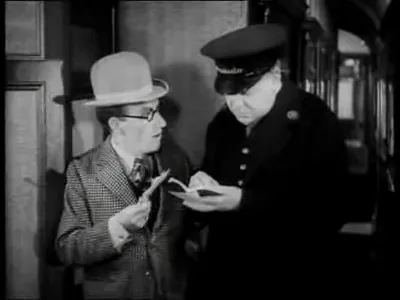
Plot Synopsis and Structural Breakdown
The Ghost Train unfolds in a single-night chronology typical of Ridley’s play: a group of disparate passengers disembark at Fal Vale Junction in Cornwall and discover there is no onward train to Truro. Stationmaster Saul Hodgkin (Herbert Lomas) warns the group that the station is haunted—by a phantom train that once plunged off a swing bridge into the river after a stationmaster’s heart attack. The narrative tension stems from their enforced stay and the gradual arrival of strange events: a mysterious woman named Julia, a vanished body, phantom whistles from a disused branch line, and the slow revelation of criminal activity beneath the guise of supernatural occurrences.
Key turning points outline the film’s structure. First, Tommy Gander’s impulsive act—pulling the communication cord to retrieve his hat—sets the chain of mischief and delay in motion. Second, the discovery that the last Truro train has gone leaves the group stranded; the stationmaster’s haunted tale establishes a folklore logic that will both terrify and motivate characters. Third, the sudden collapse of Saul Hodgkin raises stakes. Fourth, the entrance of John Price and Julia complicates the moral calculus of the waiting-room: Price claims his sister suffers from delusions; Julia insists on seeing the ghost train, driven by a trauma tied to an old accident. Fifth, the sighting or suggestion of the ghost train leads characters toward divided responses—some believe in the supernatural, some suspect criminality. Finally, the solution reveals the ghost train as a cover for Nazi fifth-columnists smuggling arms, invoked in the film’s wartime context.
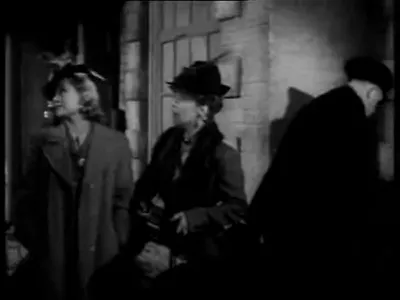
Act One: Arrival and Forewarning
From the first act, Forde establishes tone through dialogue and set—a waiting room, a handful of travelers, an oppressive rain. The film uses this unwind of domestic chat—three-piece bedroom talk, banter about wedding plans, as seen in early exchanges—to lull the viewer before the story’s tension tightens. The critic notes that the opening acts reveal class markers (first-class compartment, platform tickets) and personality types: Tommy Gander’s brazen comic energy, Richard Winthrop’s protective propriety, the nervousness of the station staff, and the pragmatism of Dr. Sterling. The conversational cadence is interrupted by the stationmaster’s ghost story, which functions as the primary narrative engine.
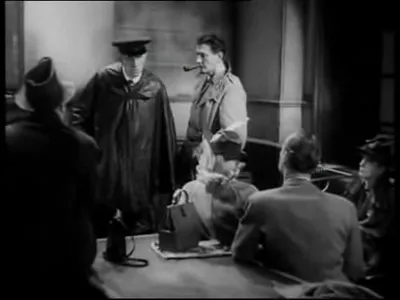
Act Two: The Night Thickens
Act Two expands the cast into situations that test resolve. The discovery of Hodgkin’s collapse is staged as a shock; the film then introduces Julia, whose presence reframes the haunting as a personal obsession. The film’s midsection explores the social dynamics of the waiting room—comic relief and rising panic alternate. The critic finds that, in this section, the screenplay’s interplay between farce and fear is at its most deft, allowing the audience to both laugh and lean forward in expectation of the next eerie sound.
Act Three: Revelations and the Night Chase
In the film’s final act, the spectral threat becomes operationalized into a plot of arms-smuggling, and a sequence of confrontations leads to the train’s plunge into the river. The reveal—where the so-called supernatural is exposed as human conspiracy—recalls classic mystery mechanics: a rational explanation emerges from legend. Yet, the film does not entirely deny the uncanny; remnants—bloodstained cloth, songs in the tunnel—preserve an atmospheric ambiguity. The critic judges that the resolution balances the narrative’s comic and thriller elements while nodding to national fears about fifth column activities during the Second World War.
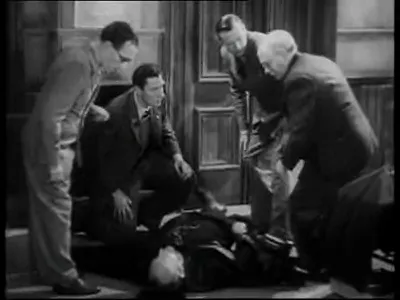
Scene-by-Scene Analysis: Key Moments
The critic selects several scenes for precise analysis, demonstrating how performance, camera work and editing create a tonal blend that can be read alongside the film noir movie tradition.
Tommy Gander’s Communication Cord (01:14 — 05:03)
The opening gaffe—Tommy Gander pulling the train’s communication cord to retrieve his hat—is both comic and catalytic. The scene establishes character: Gander’s lack of inhibition and an impulsive energy that destabilizes an ordered railway system. The critic notes how that minor indiscipline propels the plot: the delay leads to missed connections and the extended stay at Fal Vale. The scene’s composition—tight compartments, close interaction—anticipates noir’s interest in confined spaces and psychological pressure, thereby reinforcing the film’s compatibility with film noir movie atmospherics.
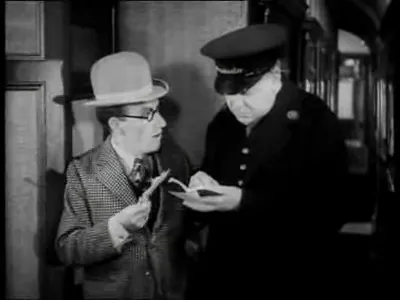
The Stationmaster’s Tale (24:12 — 26:33)
The recited legend—the stationmaster Ted Holmes, the swing bridge, the train’s plunge—acts as a verbal mise-en-scène. This recounting functions like an incantation: as the tale grows, so does the audience’s perception of the station as a locus of suspended time. The critic argues that the scene’s effect lies less in its literal content and more in how it manipulates attention: the creak of desolate tracks, the memory of lights in the tunnel, and the possibility of the past intruding into the present. This haunted temporal layering is a hallmark that the critic associates, loosely, with film noir movie preoccupations—memory, fatalism, and the return of a traumatic event.
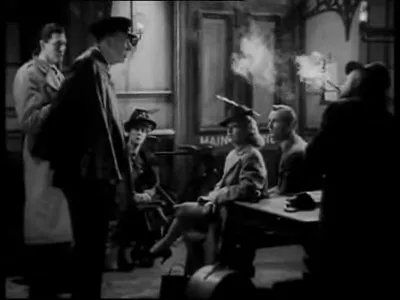
Julia’s Obsession and the Vanishing Body (57:32 — 01:00:27)
Julia’s entrance introduces an emotional counterpoint to rational explanations. Her conviction that the ghost train will return gives the story psychological stakes. The subsequent discovery that the stationmaster’s body has vanished compounds the unease. Here, the critic admires the film’s ability to sustain ambiguity between the supernatural and the prosaic. In a film noir movie, such ambiguity often signals deeper corruption or conspiracy—an approach The Ghost Train borrows to great effect.
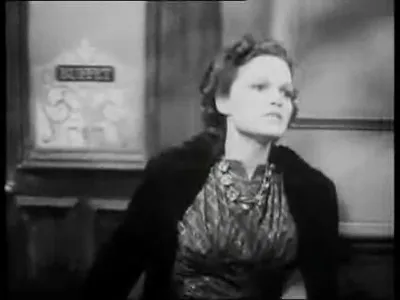
Shooting at the Tunnel and the Bloodstained Cloth (01:09:19 — 01:11:05)
The sudden burst of violence—Teddy’s gunshot at what appears to be the ghost—creates a jolt from the previously simmering dread. The discovery of a bloodstained cloth immediately reorients the mystery toward mortal consequence. The critic notes the film’s skill in juxtaposing slapstick and danger: audiences laughing one moment are made viscerally aware of stakes the next. This tonal oscillation between comedy and menace is a device that keeps spectators off-balance and underscores the film’s suspenseful pulse.
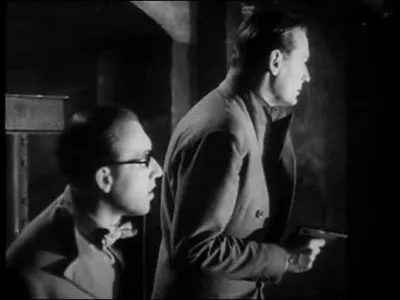
Performances and Casting
The Ghost Train’s cast was assembled to sustain both comic energy and dramatic tension. Arthur Askey (Tommy Gander) and Richard Murdoch (Teddy Deakin), the radio stars of the period, anchor the film with an accessible, broad comic style. Kathleen Harrison’s Miss Bourne provides grounded pathos, while Raymond Huntley’s John Price introduces a note of solemnity. Linden Travers as Julia and Herbert Lomas as Saul Hodgkin round out character types that are recognizable from the stage play.
The critic remarks on the casting strategy: splitting the actions of the Hulbert 1931 lead into two characters (Askey and Murdoch) recalibrates the performance balance. Askey’s broad physical comedy and breakneck banter often operate as a pressure release valve, offsetting rising dread. Murdoch, by contrast, supplies a beefier, more straight-faced foil. The critic observes that this division sometimes weakens the central tension—certain scenes that might have built to a singular comic-dramatic apex instead distribute beats across two performers—but the ensemble energy compensates for this structural choice.
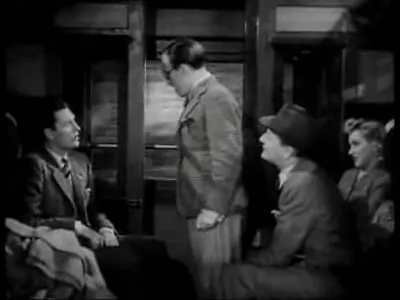
Character Dynamics
- Tommy Gander (Arthur Askey): Energetic and disruptive; comic relief that anchors human warmth.
- Teddy Deakin (Richard Murdoch): A gruffer presence, torn between bravado and panic; pivotal in action scenes.
- Julia Price (Linden Travers): The haunted figure whose obsession supplies the film’s emotional core.
- John Price (Raymond Huntley): The rational foil with motives that blur in wartime context.
- Dr. Sterling (Morland Graham): A figure of professional detachment whose medical authority complicates the supernatural claims.
The critic finds that the cast’s strengths lie in their ability to sustain tonal shifts; the film’s success depends on the audience’s willingness to accept the comic-dramatic oscillation. The Ghost Train’s ensemble is uniformly professional, supporting a narrative that mixes fright and farce without collapsing into melodrama.
Direction, Cinematography and Production Design
Walter Forde’s direction balances stage-derived constraints with cinematic possibilities. Jack E. Cox’s cinematography (noted on the Wikipedia record) and R. E. Dearing’s editing craft a visual rhythm that alternates close-quarter intimacy and sudden bursts of spatial spectacle—such as the sightlines to the tunnel and swing bridge. The art direction by Alex Vetchinsky lends the waiting-room an almost theatrical texture, but location shots in Devon supply the film with open, bleak exteriors that heighten isolation.
This critic notes how the film’s visual logic can be read alongside the film noir movie palette. Though the production was not expressly influenced by American noir, the use of low-key lighting, shadowed doorways, and rain-swept platforms resonates with noir aesthetics. The cinematography often frames characters against dark horizons or silhouetted architecture, producing an expressive chiaroscuro that amplifies dread.
Editing and Pacing
The film’s 85-minute runtime benefits from brisk pacing. R. E. Dearing’s editing keeps the action moving, ensuring that comedic interludes do not completely dissipate suspense. The critic notes, however, that occasional mismatches in tone—comic business that undercuts tense moments—reflect the compromises of adapting a stage play for a wartime audience eager for levity. Still, the overall craft sustains engagement and leads to a climax that satisfies both comedic and thriller expectations.
Themes: Haunting, Wartime Paranoia and the Comic Counterpoint
The Ghost Train operates on multiple thematic registers. At the literal level, it is a ghost story: the narrative uses folklore to visualize how communities process trauma. At the allegorical level, the film reflects wartime Britain’s anxieties—especially fears of sabotage and clandestine enemy action, as evidenced by the film’s plot revelation tying the ghost train to fifth-column operations. The critic argues that the film employs the ghost story not merely for genre thrills, but as a means of dramatizing public fears about infiltration and subterfuge.
In addition, the film foregrounds the social function of comedy during crisis. Tommy Gander’s antics, the banter among the waiting-room occupants, and the situational humour provide necessary relief from escalating dread. This interplay—comedy as balm and fear as reality—mirrors cultural patterns in wartime film production. Where the film crosses into film noir movie territory is in its portrayal of suspicion and duplicity: characters conceal motives, authority is unreliable at times, and the night-time environment acts as a moral filter that reveals character under stress.
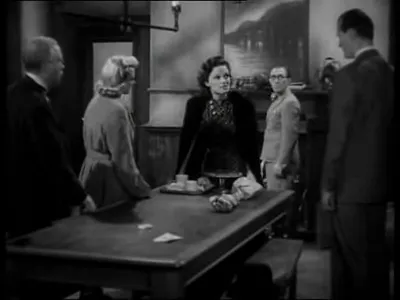
Supernatural vs. Human Agency
One of the film’s sustained tensions is its oscillation between supernatural explanation and human agency. The station’s ghost story functions as a cultural explanation for disaster; the film’s rational reveal reframes the haunting as a cover for crime. This dynamic captures modern anxieties about attribution: when bad things happen, are they the work of fate, the unknown, or human malice? The critic posits that this oscillation is central to both the film’s narrative propulsion and its emotional resonance. Moreover, this interplay recalls noir’s preoccupation with fatalism complicated by human culpability.
Critical Reception, Historical Placement and Legacy
Upon release, The Ghost Train received mixed but generally positive responses. Contemporary criticism (as summarized on Wikipedia) praised the film’s effective direction and production, drawing attention to the photography and Kathleen Harrison’s performance. Periodicals such as Sight & Sound found the remake “funnier and more ghostly than the original,” while later critics such as Leslie Halliwell judged the film “adequate” but noted some structural shortcomings arising from the lead’s division into two characters. The Radio Times Guide to Films offered a measured three-out-of-five stars, noting Arthur Askey’s overacting and the film’s predictability but acknowledging its period charm. TV Guide’s contemporary comment that the film offers “a few laughs and a couple of chilling surprises” summarizes a consensus that The Ghost Train functions as effective wartime entertainment, blending chills and humor.
The film’s legacy sits within British cinematic history as a wartime entertainments vehicle and a curious hybrid. The critic contends that modern reassessments might profit from reading the film in dialogue with film noir movie themes. While Gainsborough’s marketing and domestic tastes anchored The Ghost Train in the comic-thriller category, its mise-en-scène and narrative ambiguities make it a useful specimen for studies of national cinema during crisis.
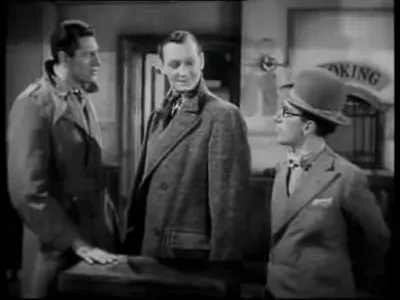
Production Notes and Contextual Details
The Ghost Train was shot at Lime Grove Studios with location exteriors in Teignmouth and Dawlish Warren; these production choices lend the film a credible coastal gloom. The screenplay rewrites were designed to accommodate Arthur Askey, splitting previous lead actions to serve Askey and Richard Murdoch as a double act—an adaptation strategy that reshaped dramatic emphasis. Directed by Walter Forde, who had previously handled an earlier sound version of the play, this film synthesizes theatrical tradition and cinematic pacing.
From a historical standpoint, the film’s release in early May 1941 places it amid wartime Britain’s darkest months. Studios were negotiating the double task of sustaining morale and reflecting national anxieties. The Ghost Train’s thematic focus on sabotage, however melodramatic, resonates with public concerns about clandestine operations and the breakdown of civic trust. As such, the film functions as both entertainment and a cultural artifact of wartime sentiment.
Comparisons: The Ghost Train and the Film Noir Movie Tradition
The critic situates The Ghost Train in comparative terms, arguing that while the film is not a canonical film noir movie—its source material, comedic tenor, and British production values place it apart from classic American noir—there are shared formal and thematic threads. Both The Ghost Train and film noir movies rely on nocturnal settings, shadowed architecture, and an atmosphere of suspicion. Both interrogate the tenuousness of authority and the capacity for social order to be undermined. Where noir often fixates on doomed protagonists and moral ambiguity, The Ghost Train adapts such motifs into a community ensemble piece where comic resources offset bleakness.
Readers should note that the critic uses the phrase film noir movie as a critical lens rather than a categorical label. The film's storm-swept exteriors, train-tunnel darks, and the moral fog that enshrouds Price, Sterling and other figures make it possible to map noir's concerns onto a British coastal thriller. Repeating the phrase film noir movie throughout this analysis underscores the critic’s intent to foreground those resonant affinities.
Why The Ghost Train Matters Today
In contemporary classic cinema scholarship, The Ghost Train offers multiple values. It exemplifies how popular entertainment during crisis periods blends emotional registers; it shows how stage-bound narratives can be reframed for screen; and it provides a study in tonal hybridity. For the critic interested in noir affinities, the film invites reconsideration: The Ghost Train can be read as a British experiment in combining comic double acts with nocturnal dread, a production that both entertains and probes the anxieties of its moment.
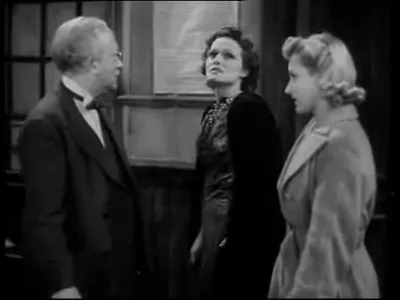
Final Evaluation and Critic’s Verdict
The Ghost Train is the kind of work that rewards both the casual viewer and the attentive critic. On one level, it is successful wartime entertainment, a compact piece of cinema that deploys star comedy to buoy an audience through suspense. On another, it is an artifact worthy of genre analysis, especially when read alongside film noir movie sensibilities. The critic judges that The Ghost Train’s greatest strength is its ensemble energy and the way production craft modulates tone. Its primary weakness lies in occasional structural dilution caused by the division of the lead’s responsibilities across multiple performers—a choice that sometimes diffuses narrative focus.
Nonetheless, the film’s atmosphere, its uneasy marriage of laughter and fear, and its wartime resonance make it a worthwhile subject for study. This critic recommends The Ghost Train to enthusiasts of classic British cinema, to students of wartime culture, and to anyone interested in the porous borders between genre traditions—especially those who seek a British counterpart to the night-bound sensibilities commonly associated with the film noir movie label.
Suggested Viewing Notes for the Film Enthusiast
- Watch attentively for how lighting and set design create tension in confined spaces—note the waiting room’s shadows and the tunnel mouth’s silhouette.
- Observe Arthur Askey’s cadences: his comic timing functions as a stress valve; consider how that timing affects the audience’s reception of suspense.
- Track recurring motifs—the whistle, the lamp, the bridge wheel—and how they are used thematically to fuse past and present.
- Consider the film’s wartime subtext and the reveal of human agency behind supernatural claims; compare this to the ethical anxieties found in classic film noir movie narratives.
- Attend to the supporting cast—Kathleen Harrison’s grounded performance offers an emotional anchor amid the comedic chaos.
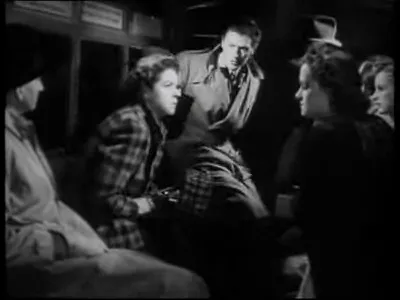
Closing Thoughts
The Ghost Train remains a lively specimen of British wartime cinema: robustly cast, crisply directed, and atmospherically shot. For the classic cinema critic inclined to cross-genre readings, it offers a fertile site to consider how film noir movie sensibilities may flow into British storytelling traditions. In short, The Ghost Train operates as an entertaining thriller, a comedic showcase, and a subtle exemplar of Britain’s cinematic self-reflection during a period of national peril. The film rewards repeated viewings and careful analysis, and it deserves a place in the canon of films that blur the lines between fear and farce.
For audiences interested in classic films that combine dread and levity, The Ghost Train is recommended. The film’s blend of night-bound atmosphere and comic energy positions it as an intriguing footnote in the history of the film noir movie conversation and in the broader catalogue of wartime British cinema.
